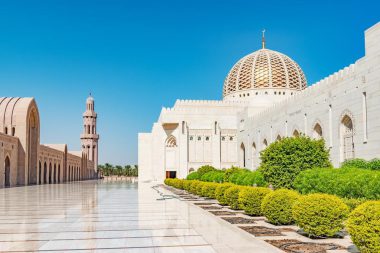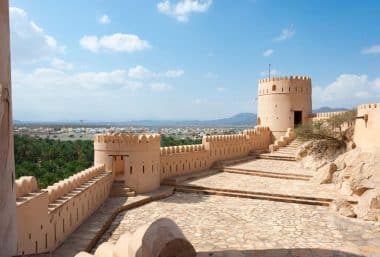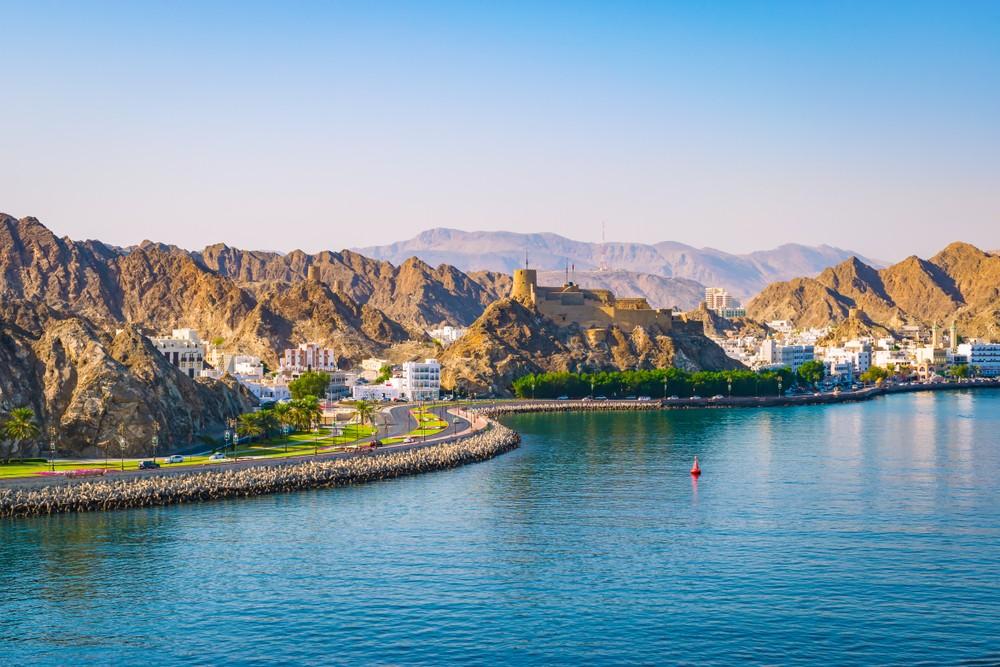This region seems barren, and it is almost deserted. And yet she is of a sensitive beauty. Oman enjoys a diverse landscape. Sometimes it is dry as dust and dominated by the color brown, and a little later it presents itself with a sea of royal palms thanks to a sophisticated system of canals in the Jebel Akhdar Mountains.
The Arab sultanate on the Strait of Hormuz, where on a clear day you can glimpse the coast of its Iranian neighbor, looks back on 5,000 years of history. It is the history of trade on the seas. Little Oman owes its importance and wealth to this strait and the important sea route. With its strategically favourable location at the tip of the Arabian Peninsula, the country played a not insignificant role in trade with the early advanced civilizations in Mesopotamia for centuries. Oman is aware of its traditions and preserves them even in times when the country has cautiously opened up to tourism.

Almost fifty years ago, a new era began with the accession of Sultan Qaboos bin Said to the throne in Oman. The young regent led his country from the Middle Ages to the present and transformed it into a society with modern structures. He had roads built and, above all, schools. It was not only the Arab environment that looked on in amazement and registered how the change from a centuries-long state of paralysis to the contemporary present took place. The Sultan knew how to include the approximately three hundred Bedouin tribes of his country in his considerations, and since the oil wells have been bubbling up on the Strait of Hormuz, there is no place in Oman where water does not flow and houses are supplied with electricity.
Only the old people in the country can remember the conditions before the agile sultan ascended the throne and the toilets on the edge of the desert were still outside their tents. According to a study by the United Nations, of all the countries in the world, Oman is the one that has developed most sustainably in the recent past. This social and economic renaissance also benefited tourism. Here, the hospitality is actually still “genuine”, even if the Omanis maintain a kind of equanimous distance when meeting people from another world. But behind this is usually not aloofness, but rather pride. And the hosts protect their private sphere. If you want to take pictures in this country as a vacationer, you should leave it at the shots with the magnificent landscape, because women in particular are angry when cameras are pointed at them. And even the male inhabitants of the picturesque mountain villages sometimes lose their otherwise cheerful nonchalance.

Tours through Oman are journeys between Orient and Occident. This country has chosen silence and frowns upon everything presumptuous and loud. The Arab Emirates’ small neighbour has retained a trace of its centuries-old secrets. On the edge of the desert, a fine sand always blows through the alleys of the villages and the Bedouins still boast of the gift of being able to read the map and the peculiarities of their sand mountains. On the market squares, colorfully dressed women offer their goods – mostly the fish of the sea and fruit from their gardens.
Oman – but this is also the actual home of incense and thus of a fragrance that beguiles the senses and for which even Alexander the Great once wanted to wage war. As it was 3,500 years ago, the frankincense trade is still an important source of income for the people of Salalah, the metropolis of the south. In the past, up to 3000 tons per year are said to have been transported from here to the Roman Empire. Weihrauch is one of the most important ambassadors of a country that is waiting to be explored on your own or in the form of a package tour .
Travel information Oman
| Capital | Muscat |
|---|---|
| Form of government | Hereditary Monarchy Political system |
| Currency | Rial Omani (OMR) |
| Area | approx. 309,500 km² |
| Population | approx. 4,397,790 (2015) |
| Languages | Arabic |
| Electricity grid | 240 volts, 50 Hz |
| Area code | Phone +968 |
| Time zone | UTC+4 |


